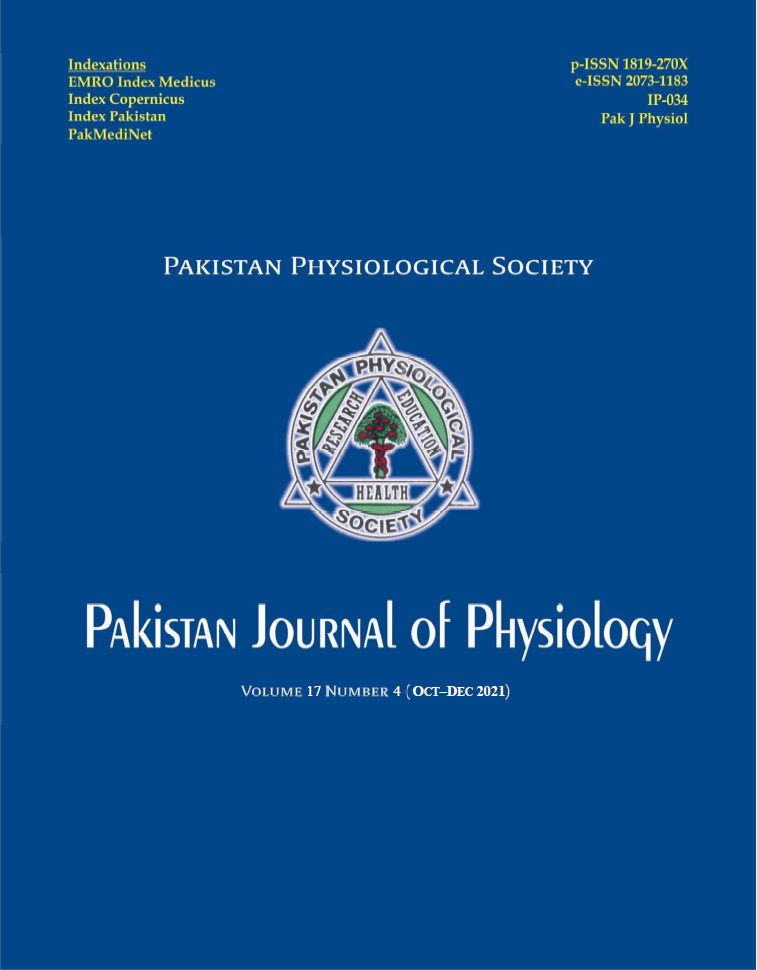ASSESSMENT OF STRESS, ANXIETY & DEPRESSION LEVELS AMONG MEDICAL FACULTY DUE TO ONLINE TEACHING IN COVID-19
DOI:
https://doi.org/10.69656/pjp.v17i4.1410Keywords:
Online teaching, Medical Colleges, Medical Faculty, Depression, Anxiety, stressAbstract
Background: COVID-19 pandemic brought with it new challenges for teaching activities of the faculty, including need to master the basic use of technology to teach online in changed working environment while dealing with the additional health, family, and work-related challenges. This study aims to evaluate the occurrence of psychological parameters of stress, anxiety, and depression among the participants and the factors for coping with the said psychological parameters. Methods: This cross-sectional, questionnaire-based study was conducted in Jan–Jul 2021. Faculty teaching online classes in different medical colleges of Pakistan were invited through social media platforms to participate in the study. The DASS-21 scale was used to evaluate depression, anxiety and stress. Results: The factors that had significant contribution to stress, anxiety and depression in the faculty of medical colleges teaching include abrupt transition from face to face to online teaching, job insecurity, and personal and family financial situation. Lack of prior training in proper use of technology was associated with depression, while the uncertainty for duration of the lockdown and personal health issues were associated with anxiety. Coping factor that showed significant association with stress, anxiety and depression was increased intake of drugs. Conclusion: There are substantial changes in faculty’s mental state concerning exhaustion, stress, depression, and anxiety after switching to online teaching as a result of COVID-19 quarantine. Appropriate measures need to be taken for training of the faculty with IT support, and to ensure peace of mind for the faculty for maximum output.
Pak J Physiol 2021;17(4):55–8
Downloads
Downloads
Published
How to Cite
Issue
Section
License
The author(s) retain the copyrights and allow their publication in Pakistan Journal of Physiology, Pak J Physiol, PJP to be FREE for research and academic purposes. It can be downloaded and stored, printed, presented, projected, cited and quoted with full reference of, and acknowledgement to the author(s) and the PJP. The contents are published with an international CC-BY-ND-4.0 License.











